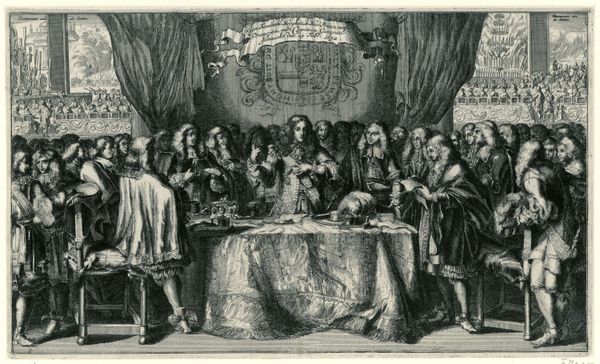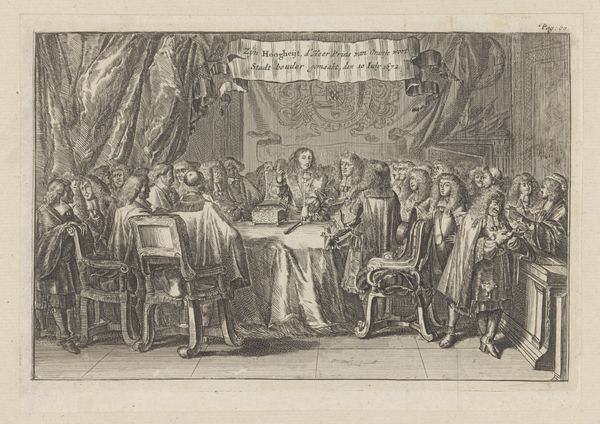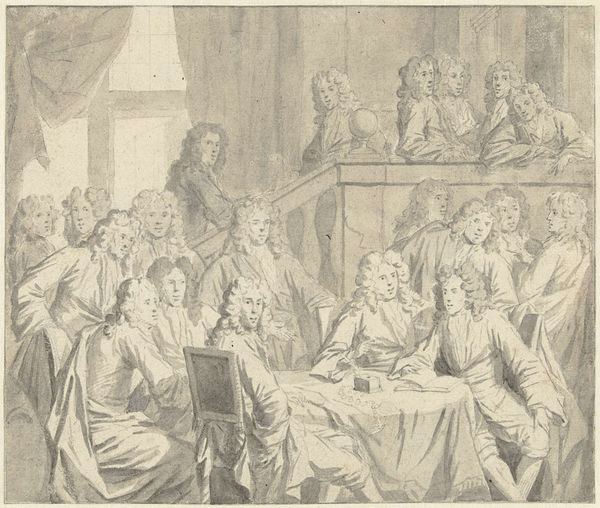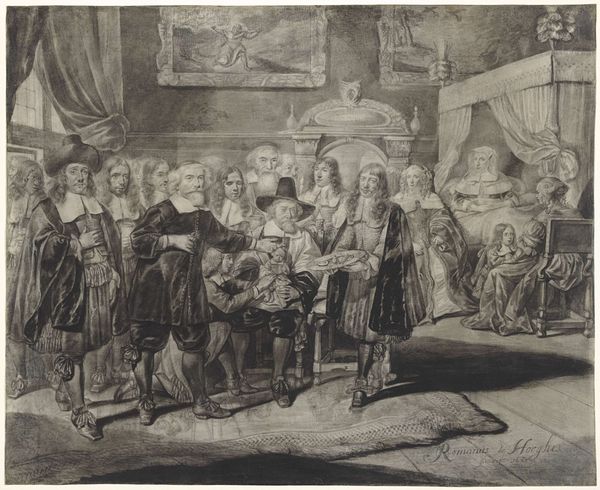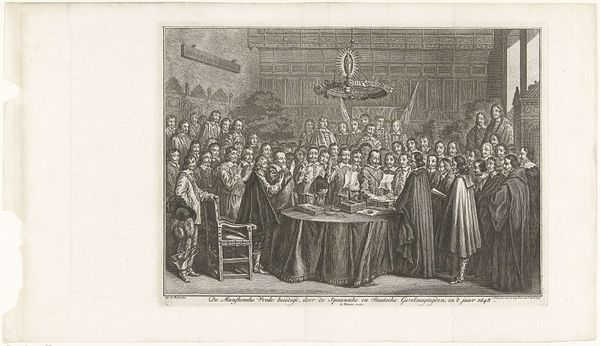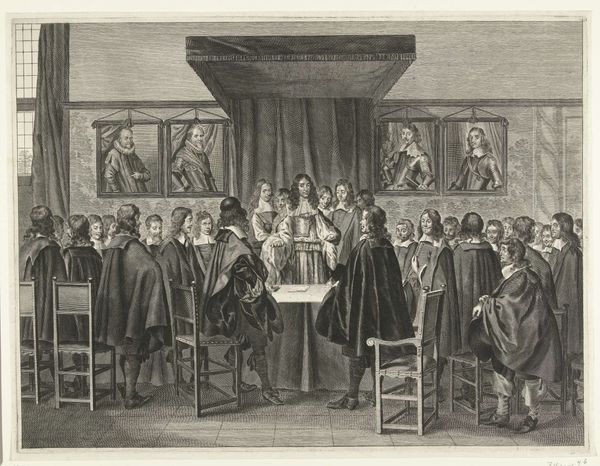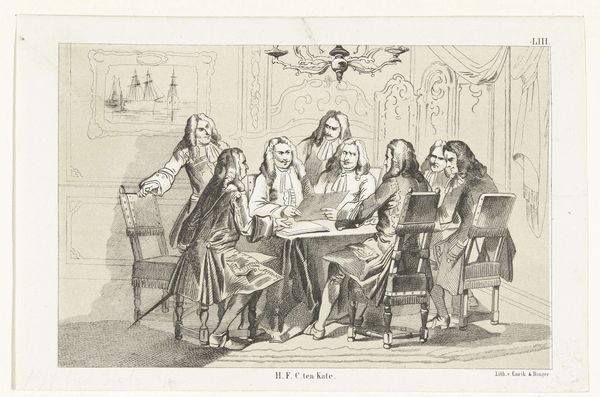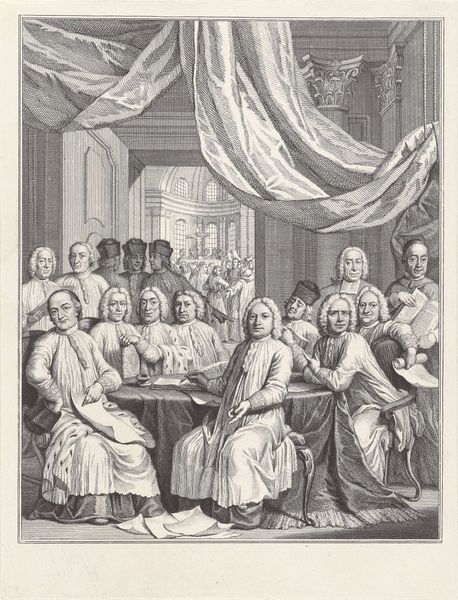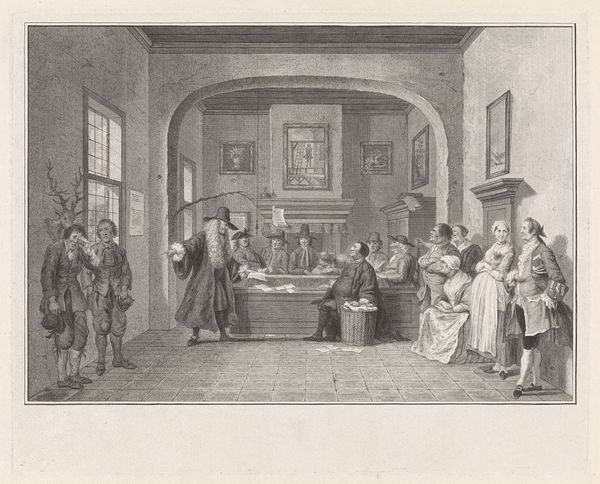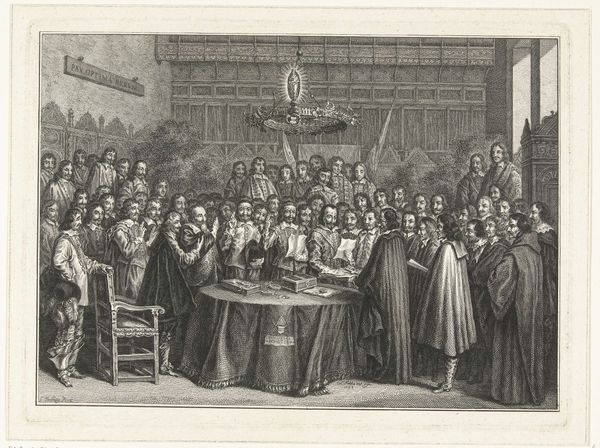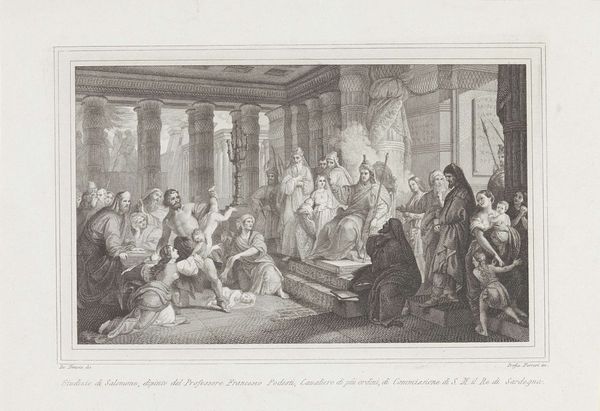
print, engraving
#
portrait
#
baroque
# print
#
pen sketch
#
old engraving style
#
group-portraits
#
history-painting
#
engraving
Dimensions: height 183 mm, width 275 mm
Copyright: Rijks Museum: Open Domain
Editor: This is "Willem III ingezworen als kapitein-generaal, 1672," created by Romeyn de Hooghe using engraving techniques. Looking at this print, I'm struck by how detailed it is, especially considering the medium. There’s a real sense of formality and gravity to the scene. What strikes you most about this piece? Curator: What interests me immediately is the material reality embedded within this image. This print isn’t just documenting an event; it's a carefully produced object, a commodity reflecting and shaping political power. Think about the labor involved in its creation, the engraver’s skill translating political theatre into reproducible imagery. How might the consumption of this print have shaped public opinion or reinforced existing social hierarchies? Editor: That's a really interesting way to look at it. So, it’s not just about what the image shows, but what it *does*? Curator: Exactly. Consider the cost of the materials – paper, ink – and the networks of distribution necessary to get this image into the hands of viewers. Who could afford it? Where would they display it? The print itself becomes a tool, actively participating in the construction and dissemination of William's authority. The seemingly neutral depiction actually supports very specific economic and power structures. What can you tell me about the way clothing materials might be involved in power relations here? Editor: Well, everyone in the engraving is wearing these very elaborate, expensive outfits. Maybe the display of wealth was an important piece of legitimizing Willem's leadership at that time? Curator: Precisely. So thinking about material realities expands our interpretation of historical artworks like this engraving. Editor: I never really considered prints as active objects before, but this has definitely changed my perspective. Curator: Examining the processes and materials invites critical questions that help reveal how art functions within larger social and economic systems.
Comments
No comments
Be the first to comment and join the conversation on the ultimate creative platform.
